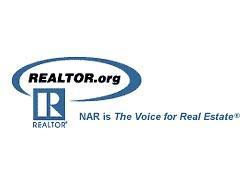Existing Home Sales Rose 3.3% in Jan.
Washington, DC, February 22, 2017—Total existing-home sales expanded 3.3% to a seasonally adjusted annual rate of 5.69 million in January from an upwardly revised 5.51 million in December 2016, according to the National Association of Realtors.
January's sales pace is 3.8% higher than a year ago (5.48 million) and surpasses November 2016 (5.60 million) as the strongest since February 2007 (5.79 million).
Lawrence Yun, NAR chief economist, says January's sales gain signals resilience among consumers even in a rising interest rate environment. "Much of the country saw robust sales activity last month as strong hiring and improved consumer confidence at the end of last year appear to have sparked considerable interest in buying a home," he said. "Market challenges remain, but the housing market is off to a prosperous start as homebuyers staved off inventory levels that are far from adequate and deteriorating affordability conditions."
The median existing-home price for all housing types in January was $228,900, up 7.1% from January 2016 ($213,700). January's price increase was the fastest since last January (8.1%) and marks the 59th consecutive month of year-over-year gains.
Total housing inventory at the end of January rose 2.4% to 1.69 million existing homes available for sale, but is still 7.1% lower than a year ago (1.82 million) and has fallen year-over-year for 20 straight months. Unsold inventory is at a 3.6-month supply at the current sales pace (unchanged from December 2016).
Properties typically stayed on the market for 50 days in January, down from 52 days in December and considerably more a year ago (64 days). Short sales were on the market the longest at a median of 108 days in January, while foreclosures sold in 51 days and non-distressed homes took 49 days. Thirty-eight percent of homes sold in January were on the market for less than a month.
"Competition is likely to heat up even more heading into the spring for house hunters looking for homes in the lower- and mid-market price range," added Yun. "NAR and realtor.com’s new ongoing research — the Realtors Affordability Distribution Curve and Score — revealed that the combination of higher rates and prices led to households in over half of all states last month being able to afford less of all active inventory on the market based on their income."
Inventory data from realtor.com reveals that the metropolitan statistical areas where listings stayed on the market the shortest amount of time in January were San Jose-Sunnyvale-Santa Clara, California, 43 days; San Francisco-Oakland-Hayward, California, 47 days; San Diego-Carlsbad, California, 55 days; Seattle-Tacoma-Bellevue, Washington, 57 days; and Nashville-Davidson-Murfreesboro-Franklin, Tennessee, Vallejo-Fairfield, California, and Greeley, Colorado, all at 58 days.
NAR President William E. Brown, a Realtor from Alamo, California, cautions about another source that could possibly drag down inventory for would-be buyers in coming months. "Supply and demand imbalances continue to be burdensome in many markets, and now Fannie Mae is supporting a Wall Street firm's investment in single-family rentals," he said. "This will only further hamper tight supply and put major investors in direct competition with traditional buyers. Instead, the GSEs should lower overly burdensome fees (link is external) and help qualified borrowers become homeowners."
First-time buyers were 33% of sales in January, which is up from 32% both in December and a year ago. NAR's 2016 Profile of Home Buyers and Sellers — released in late 2016 — revealed that the annual share of first-time buyers was 35%.
According to Freddie Mac, the average commitment rate for a 30-year, conventional, fixed-rate mortgage decreased slightly in January to 4.15% from 4.20% in December. The average commitment rate for all of 2016 was 3.65%.
All-cash sales were 23% of transactions in January, up from 21% in December but down from 26% a year ago. Individual investors, who account for many cash sales, purchased 15% of homes in January, unchanged from December and down from 17% a year ago. Fifty-nine percent of investors paid in cash in January.
